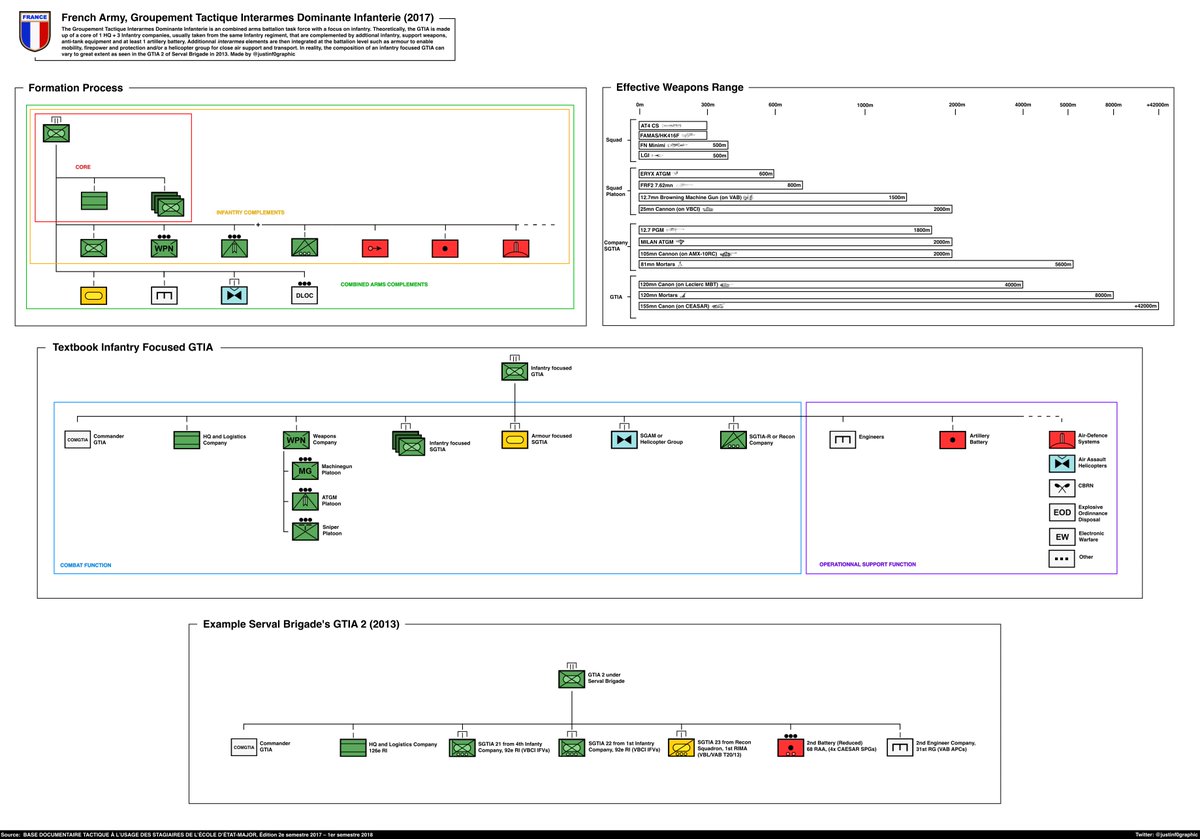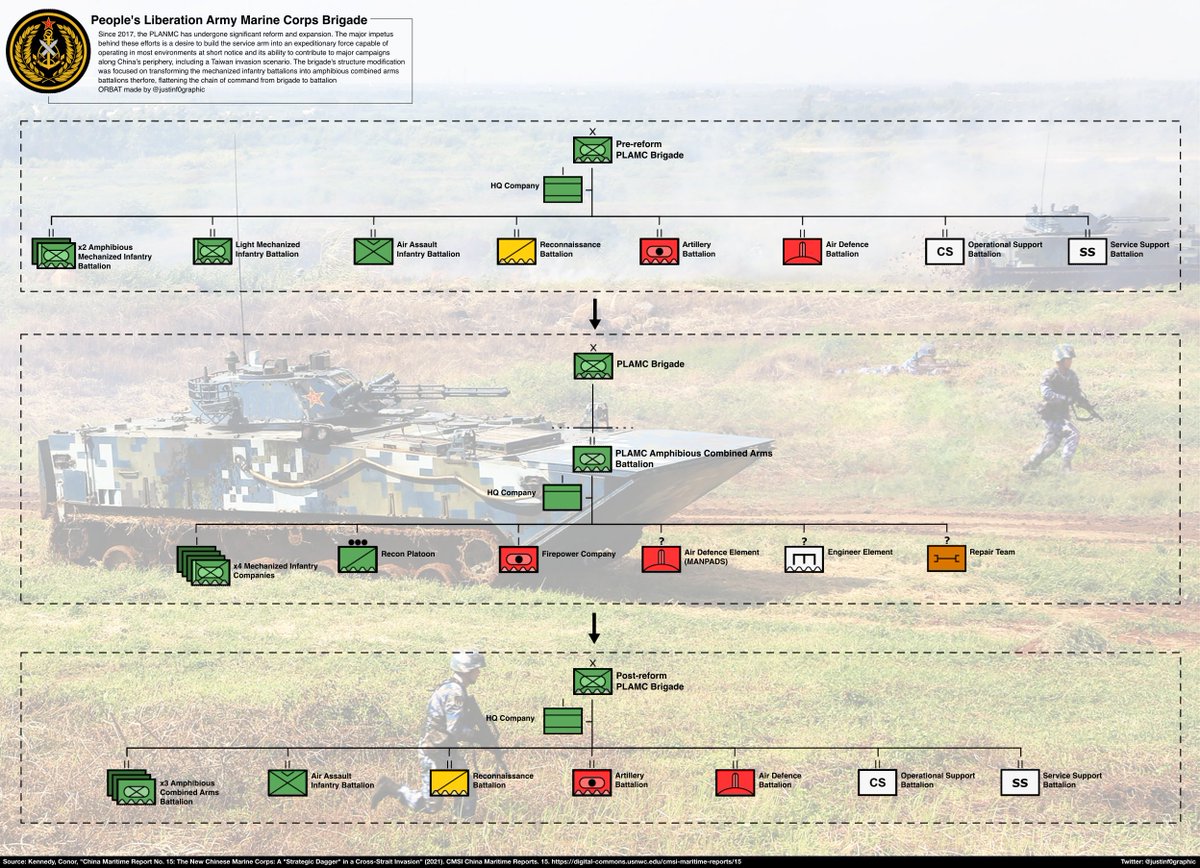ORBAT of the French SGTIA deployed for the mission Lynx in Estonia between March and August 2023. This company-sized element is one of France’s contributions to the NATO eFP/eVA missions 🧵⬇️ #ORBATboys 

1. I have made previous infographics on GTIA which are ad-hoc battalion task forces created for specific missions with the units available at one point in time. The SGTIA is very much the same idea but at the company level (like US Company Teams). Often SGTIAs make up a GTIA. 



2. The French Army recently published a video with detailed information on the composition of the SGTIA. The core of the element is centred around an infantry company (1st) from the 13e Demi brigade de la Légion étrangère.
3. It is also reinforced by a platoon of AMX10-RCR. Likely coming from another brigade within the 6e brigade légère blindé and an artillery forward observer unit likely equipped with UAVs. 

4. The video showcases around 13 VBMR Griffons. The @EtatMajorFR mentioned a total of 18 Griffons being deployed. The captain of the SGTIA says he has around 20 Griffons available.
https://twitter.com/EtatMajorFR/status/1640746819599704065?s=20
5. In addition, the video showcases 3 AMX10-RCRs, 8 GT180s, 2 VABs Sanitaire, 2 VTCs, 2 PVPs, 2 VT4s and 2 VBLs. Bear in mind these numbers were gathered by counting the vehicles in the video, so the real numbers are probably different. 

6. Overall, this is a good example of what an infantry-dominated SGTIA can look like. The core is centred around an infantry company and is reinforced by elements from other regiments to create a combined arms company. 

End. 🧵⬆️
@CaseMethodClub @zonemilitaire @MICHELYohann @blablachars
@RymMomtaz @Asulembre @balt_security @JonHawkes275 @EngageStrategy1 @VincentTourret @Marsattaqueblog @OpexNews @MichaelShurkin @battle_order
@FrForcesEstonia
@CaseMethodClub @zonemilitaire @MICHELYohann @blablachars
@RymMomtaz @Asulembre @balt_security @JonHawkes275 @EngageStrategy1 @VincentTourret @Marsattaqueblog @OpexNews @MichaelShurkin @battle_order
@FrForcesEstonia
• • •
Missing some Tweet in this thread? You can try to
force a refresh





















